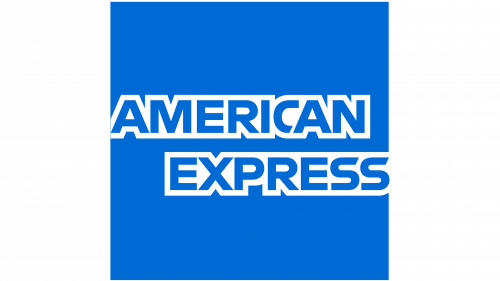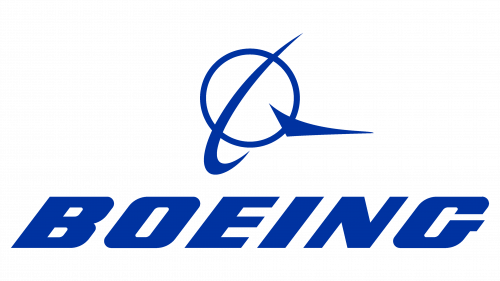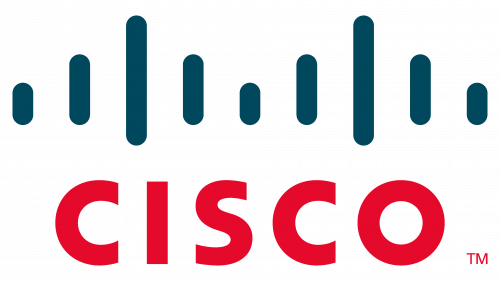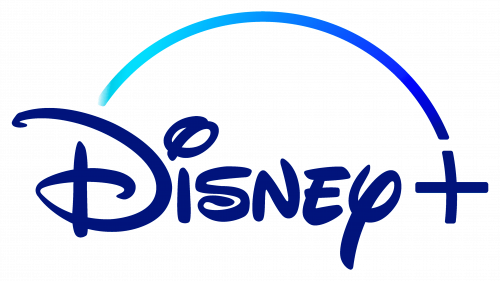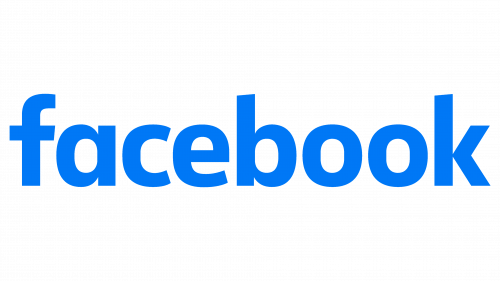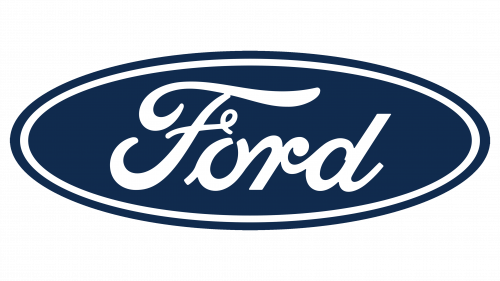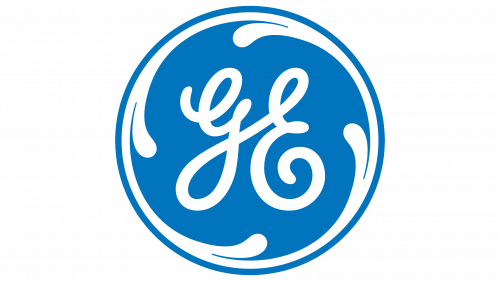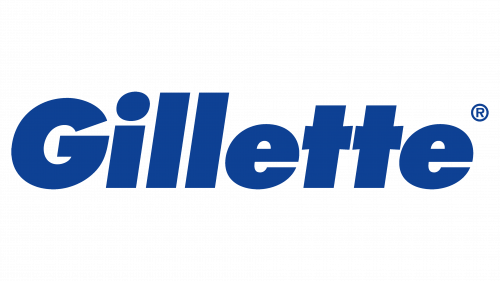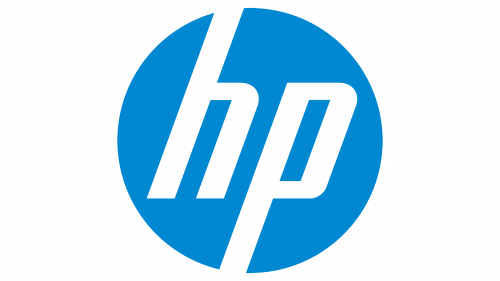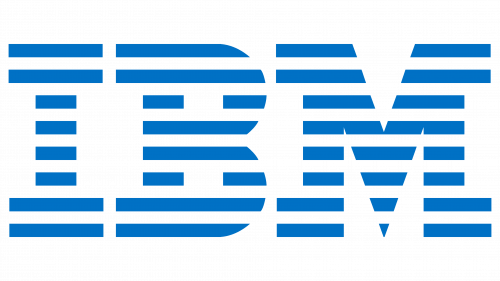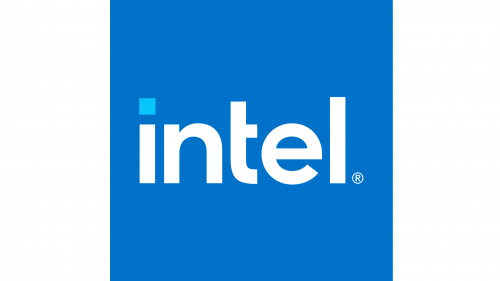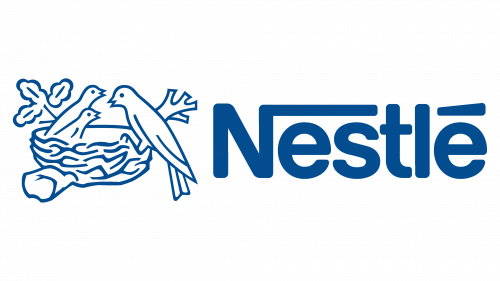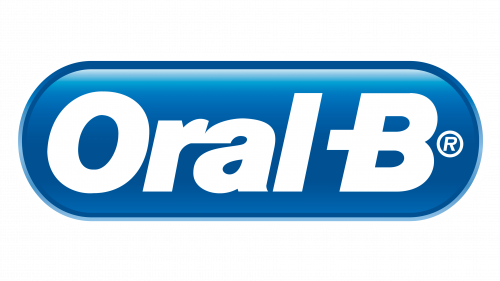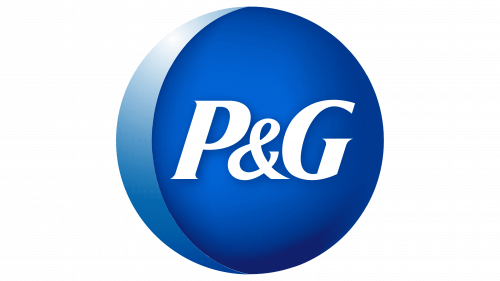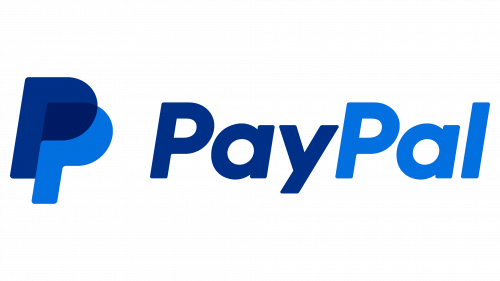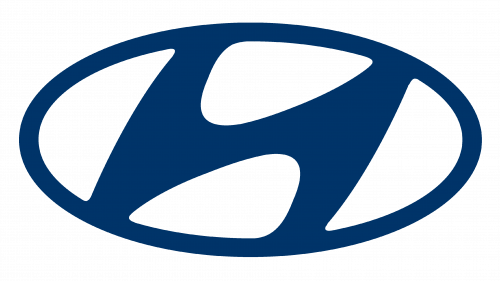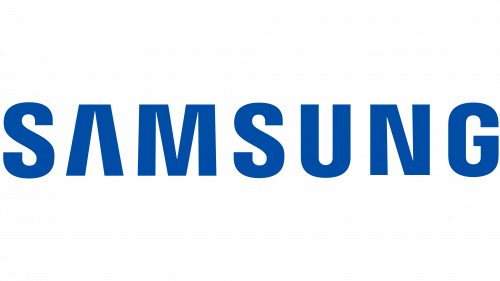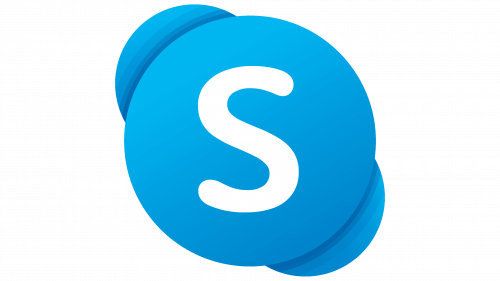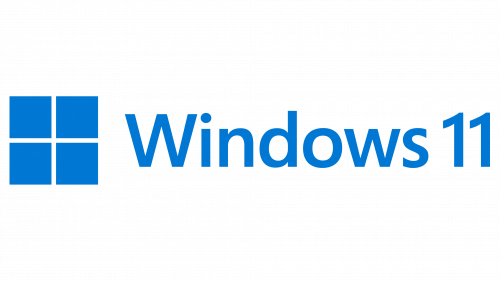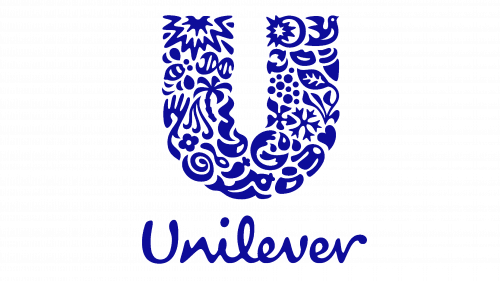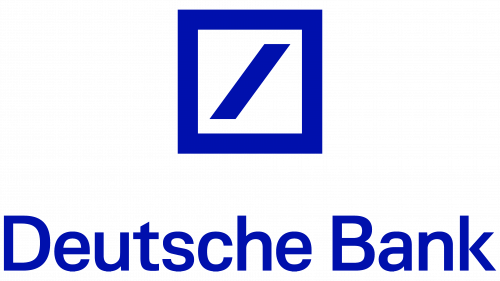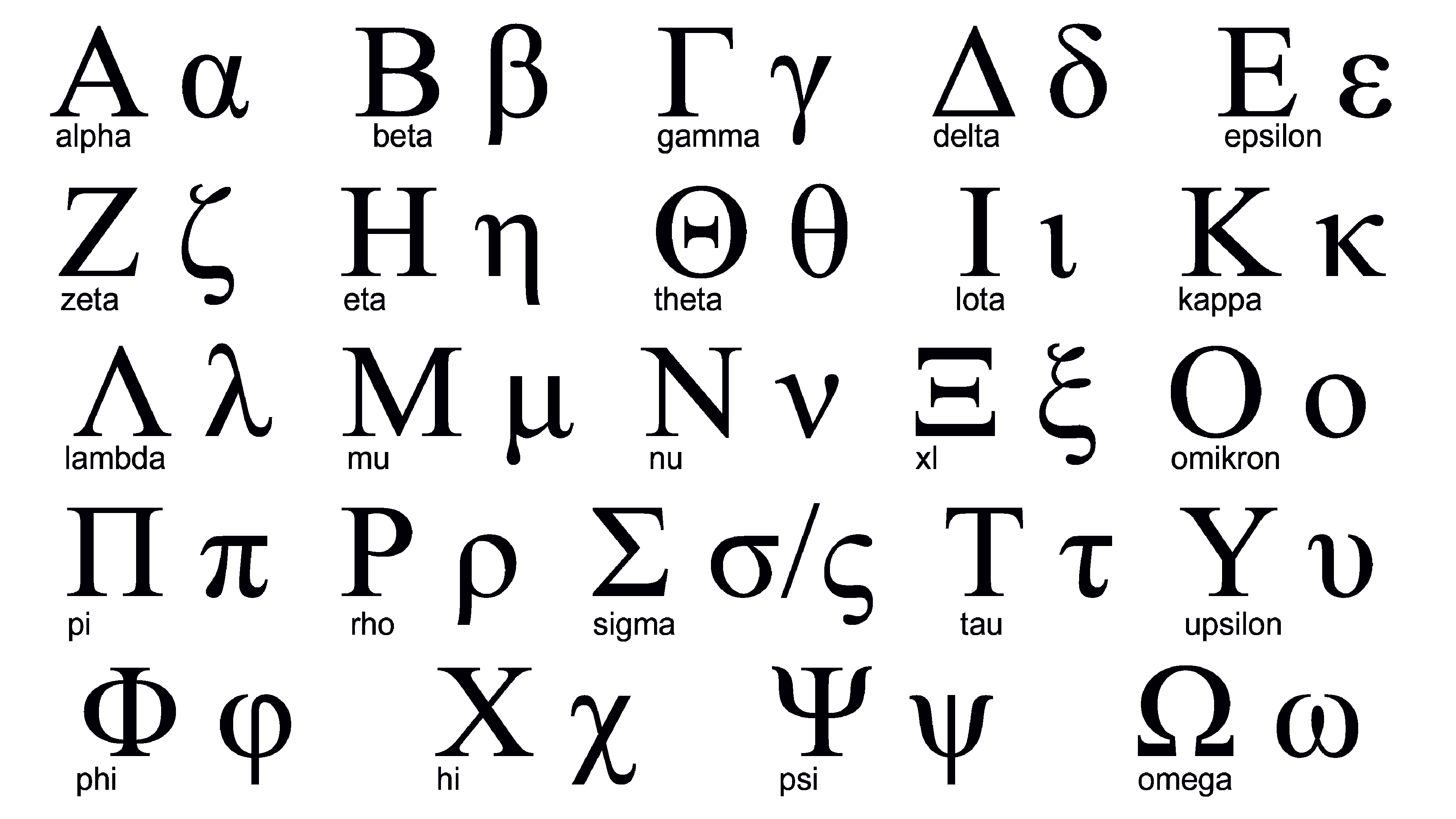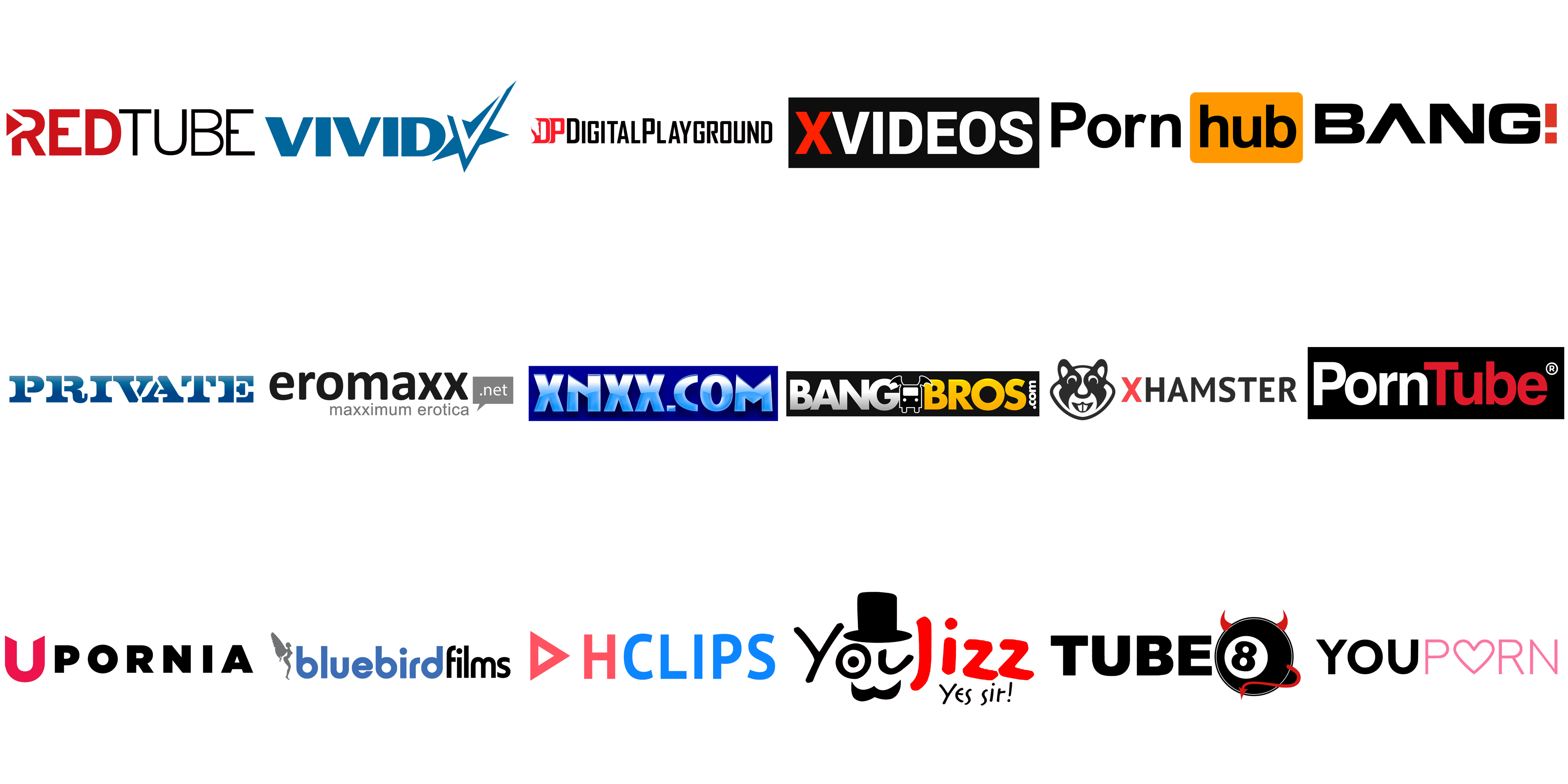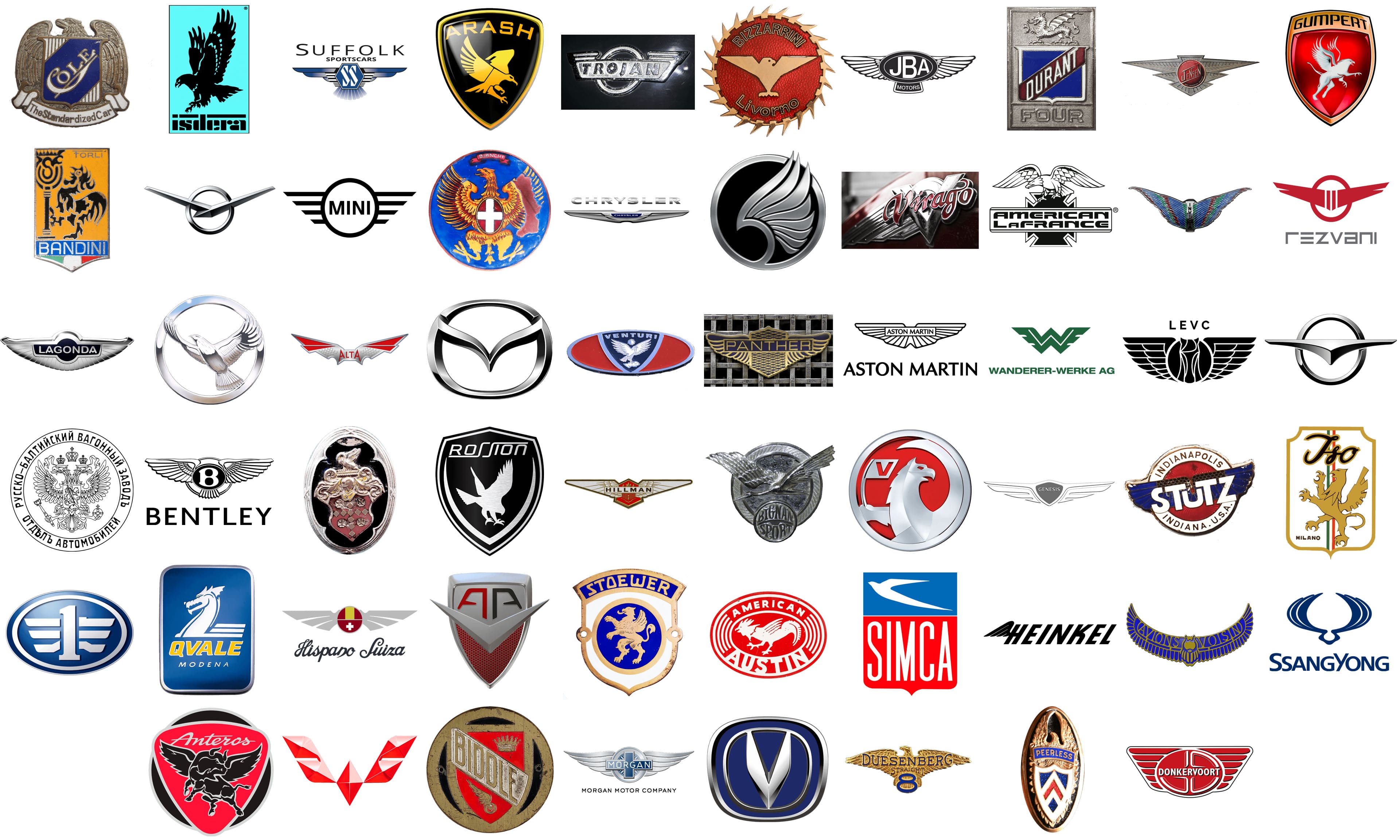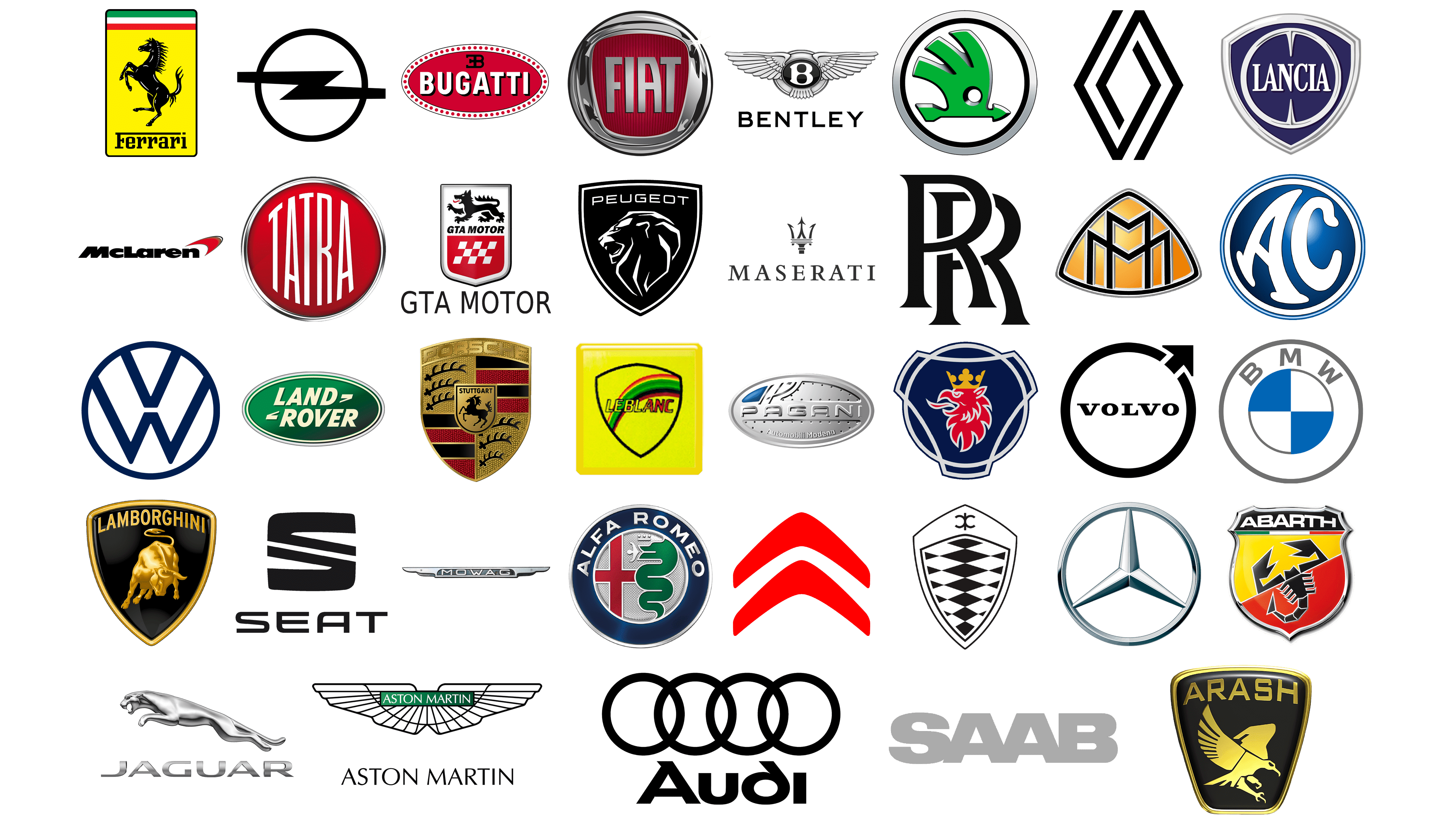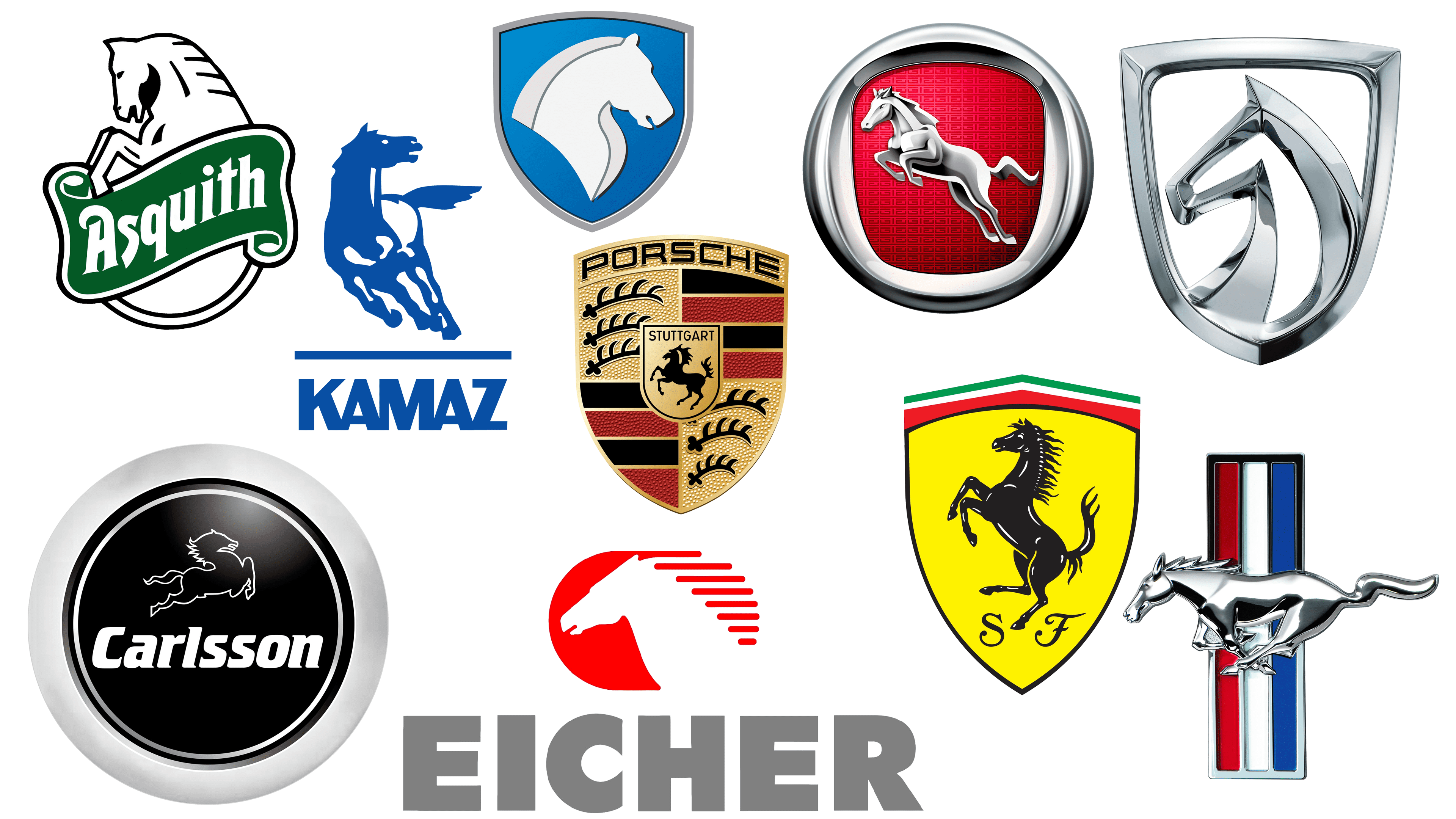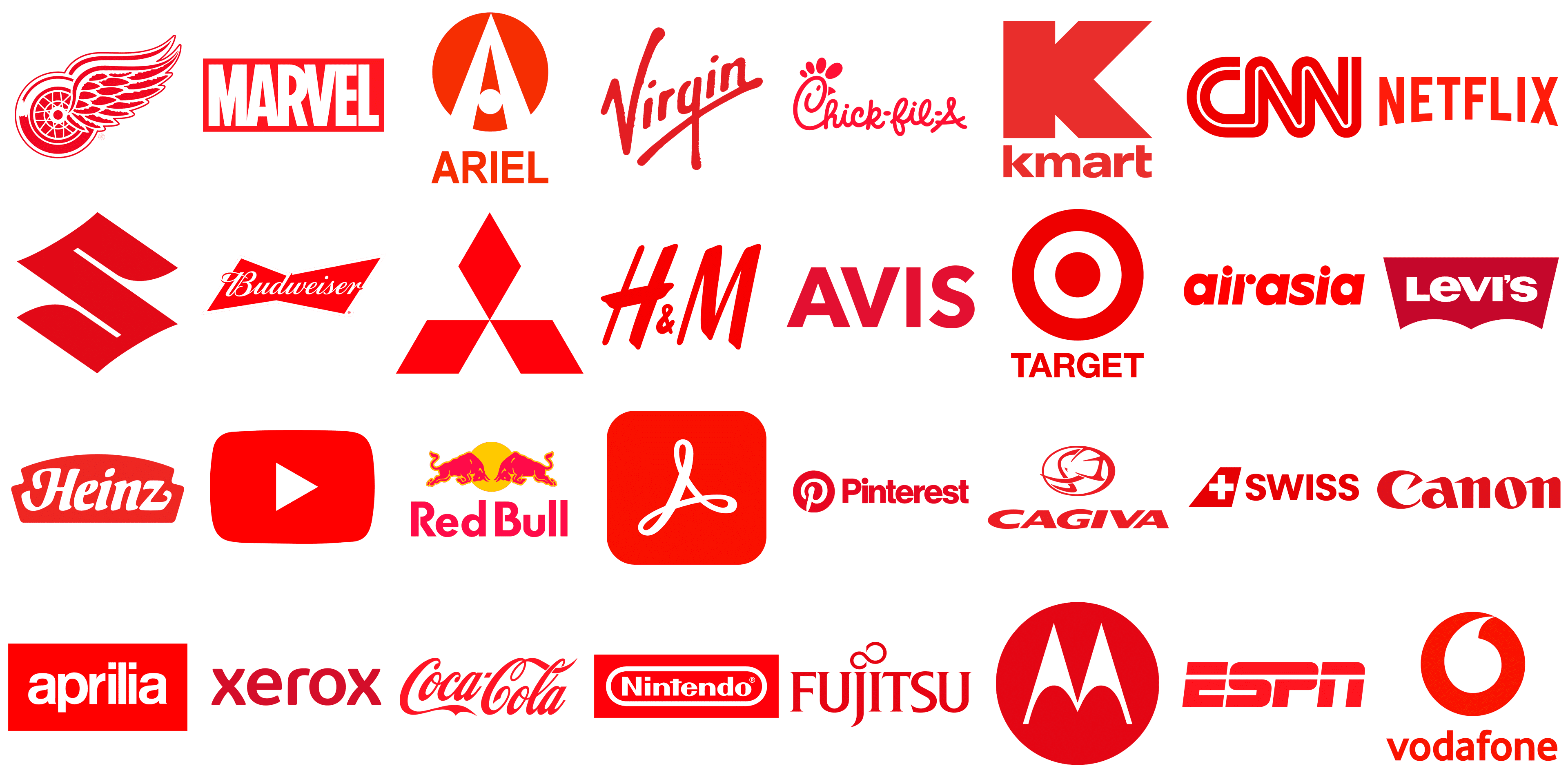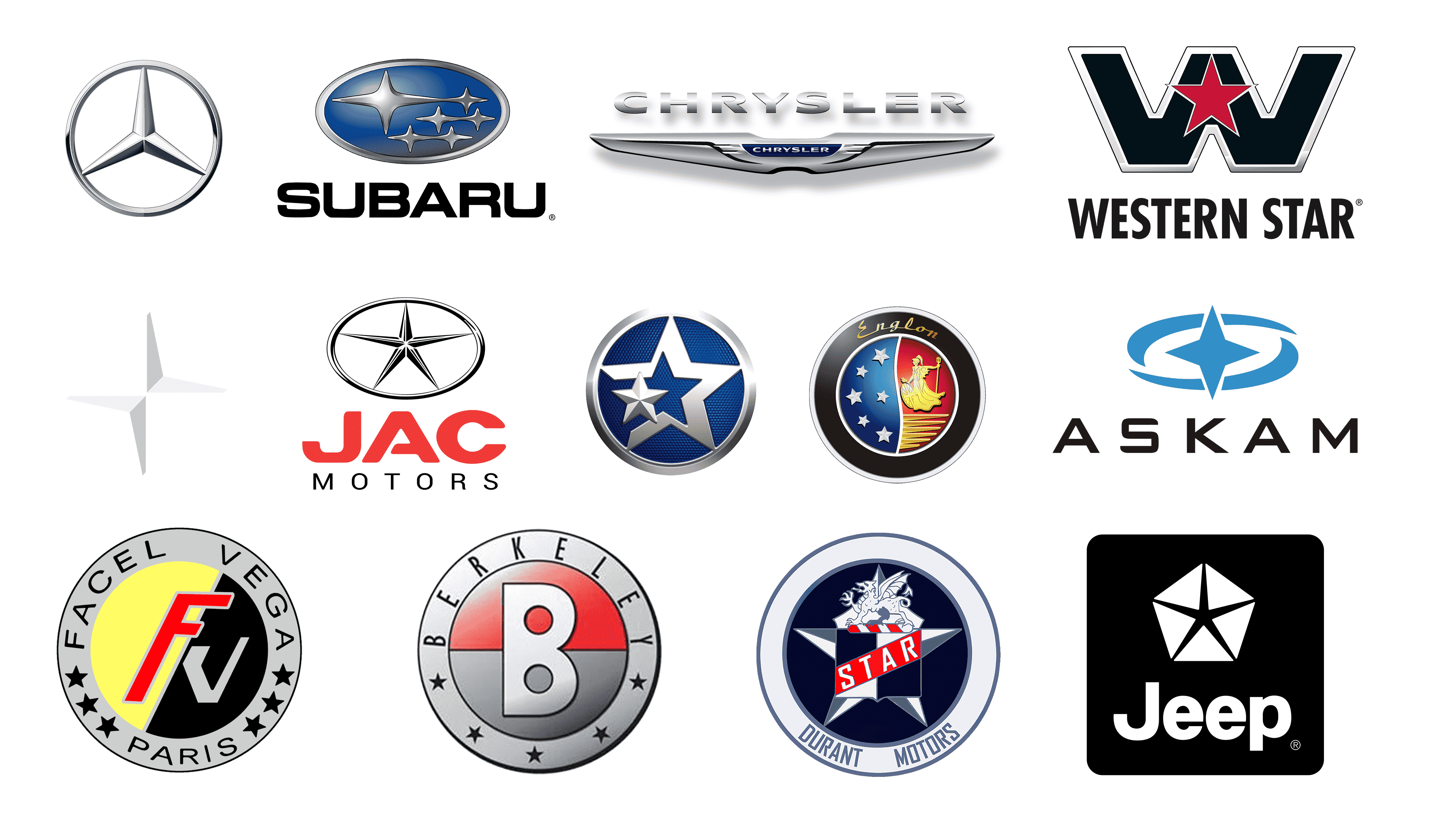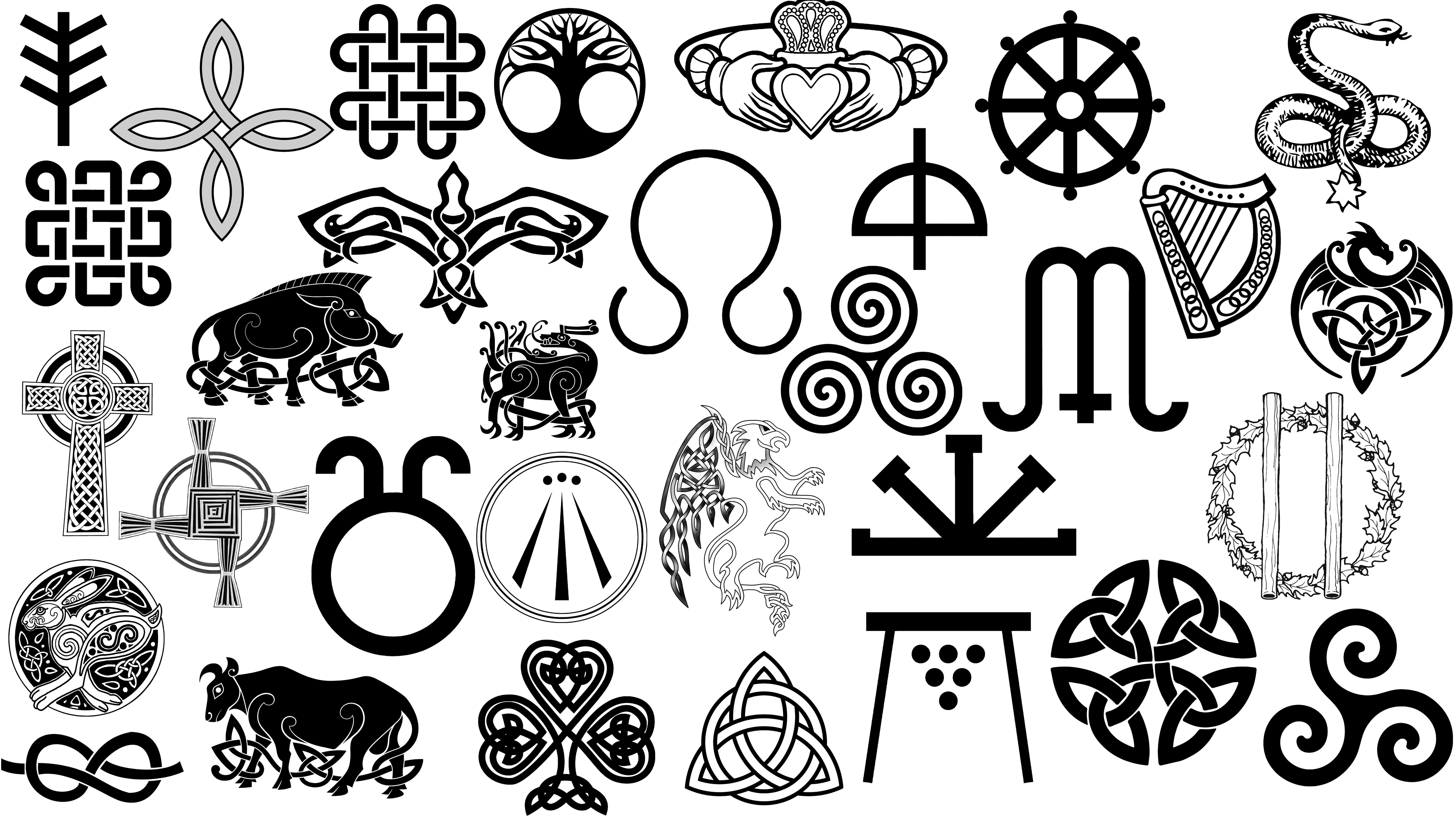Most Famous Logos in Blue
Confidence and reliability are conveyed through the use of blue in logos, which is why it’s a common choice for finance and tech giants. However, variations in hue can add additional meanings; lighter shades exude a fresh and contemporary vibe, while dark blue typically represents professionalism and a conventional business outlook. The impact of blue also relies heavily on the other colors used in the logo’s palette. For example, when paired with white, blue enhances its values, while red or orange may appear less prominent. This article examines some of the most recognizable logos that incorporate a blue color scheme, showcasing how color plays a significant role in visual identity design. Brands and companies are listed in alphabetical order.
American Express
American Express is a renowned financial corporation, with a global presence. This company offers an array of banking services, but it is particularly celebrated for its payment system, and credit and debit cards. The American Express logo showcases the lettering rendered in uppercase, against a striking bright square background. The letterforms exhibit the same light blue gradient as the square, however, due to the broad white contour, they seem more balanced. The bottom line of the text is slightly inclined to the right.
AT&T
AT&T, one of the world’s leading telecommunications companies, is known for its blue logo. This Fortune 500 behemoth showcases a logo that embodies a stylized blue and white sphere with dynamic swirling lines, exuding motion, and vitality. At times, the logo is accompanied by a straightforward inscription, set in a modern geometric sans-serif typeface, in dark gray or black, and written in uppercase letters. The light blue shade employed in the AT&T emblem is invigorating and conveys a sense of forward-thinking innovation.
Boeing
The renowned aircraft manufacturer, Boeing, uses a brand identity that features a stylized abstract emblem, complemented by a substantial italicized name caption. The word is written in uppercase letters, set in a sleek geometric sans-serif typeface, and provides balance to the emblem’s thin lines. The emblem is a circular outline with a long orbit crossing it vertically, featuring sharpened tails and a bold tick representing an airplane on the right. The emblem’s blue shade is bright, making the logo eye-catching and memorable.
Cisco
The visual identity of Cisco, the globally recognized technology company, boasts a logo that comprises a straightforward and chic design. It features a bold uppercase inscription in slightly narrowed letters with ample spacing between each character. Adding to the charm of the logo is a graphical element, which sits above the logotype and is made up of nine vertical lines of varying lengths. Cisco is involved in hardware and software production, and telecommunication equipment, and provides a range of services related to their products.
Dell
Dell, the well-known producer of computers and computer accessories, sports a calm medium-blue hue in its logo. This shade evokes a feeling of stability and dependability, which is of the utmost importance for a company in the tech industry. The logo consists of a distinctive wordmark with a diagonally placed letter “E” encased in a circular frame of the same color. The lettering is presented in a bold geometric font with crisp lines and angles, providing a harmonious balance to the smooth and uncluttered shape of the frame.
Disney+
The Disney + logo boasts a vibrant blue color, showcased in a unique gradient palette. The iconic Disney lettering, in its recognizable cursive font, is written in a rich blue hue with a touch of purple The vertical bar of the accompanying “+” sign is slightly curved at its center, creating a base for the thin gradient line that sits atop the logo. This innovative design not only captures the essence of Disney but also adds a modern and dynamic touch to the brand.
Facebook, a well-known social media giant, has long been synonymous with the color blue. Though the hue may have shifted slightly over the years, it remains the sole shade utilized in their logo. The emblem features casual lowercase lettering in a sleek sans-serif font with bold lines and neat edges. The current iteration of the Facebook logo showcases a lively and energetic shade of blue that instills a sense of trust, reliability, and trustworthiness, while also exuding a friendly and approachable aura.
Ford
The Ford Motor Company is a significant name in the automobile industry and one of the largest and oldest car manufacturers. It boasts a visually striking logo, embodied in a horizontally aligned oval medallion, with a rich and deep blue background. The badge is further accentuated with a double blue and white outline, adding dimension and depth to the design. At the center of the medallion lies the iconic white “Ford” lettering in a fluid cursive font, echoing Henry Ford’s signature. The deep blue hue chosen for the logo creates a sharp contrast with the white, exuding a sense of elegance and superiority.
General Electric
The logo of GE, also known as General Electric, stands out as a symbol of one of the largest conglomerates in the United States. The iconic logo is a tribute to tradition, with its elegant circular medallion sporting a soothing light blue background and crisp white outline. At the center, a white cursive monogram adds a touch of refinement, imbuing the logo with a sense of confidence and stability. With a presence in diverse sectors, including aircraft engines, energy, finance, and healthcare services, the blue color selection for the GE logo embodies trust and reliability in its various ventures.
Gillette
Gillette, the brand of personal hygiene products, uses a dark shade of blue in its logo. The logotype, written in title case letters of an italicized sans-serif font, is set on a transparent background and evokes professionalism and reliability. The blue used in the logo helps to soften the bold and heavy lines of the letters, giving them a sense of elegance and emphasizing the quality of the company’s products.
HP
HP, formerly known as Hewlett-Packard, is a well-considered American firm that has been producing computers and accessories for decades. Its logo, consisting of a blue circular background with the “HP” in white lowercase lettering, is recognizable worldwide. The white letters are slanted to the right and have elongated vertical bars, giving a cut-out appearance as they blend into the blue circle’s border. The calm dark shade of blue used for the logo represents stability and professionalism.
IBM
The iconic brand IBM, a leader in the computer industry, is known for its instantly recognizable logo. The visual identity features a distinctive bold uppercase inscription in blue against a white background. The letters are highlighted by seven white stripes that cut through them horizontally, creating a symmetrical pattern with evenly spaced white and blue lines of equal width. The calming and clean blue color represents IBM’s commitment to professionalism, quality, and stability, exuding a sense of trust and excellence in the brand.
Intel
The Intel logo stands out for its unique design. The light shade of blue used for the brand symbolizes its professional approach and commitment to stability. The oval frame adds a dynamic touch to the logo, while the lowercase sans-serif typeface conveys a sense of approachability and friendliness. The open contour line on the frame enhances the modern feel of the logo and adds an element of sophistication to the brand image.
Nestle
Nestle is one of the world’s leading food companies. Its emblem, featuring a family of birds in a nest, is defined by delicate blue lines, while its recognizable logotype, written in a stylized capitalized font, has thick and fluid blue lines. The use of blue in the logo conveys a sense of professionalism and stability, while the emblem highlights the company’s traditional values and rich heritage.
Nokia
The iconic mobile phone brand, Nokia, known for its glory days in the late 90s to early 2000s, boasts a globally recognized logo. The logo features bold, capital letters in a sleek sans-serif font, all in a vibrant shade of blue. The use of this deep and bright blue conveys the brand’s confidence and experience, while the simplicity of the logo emphasizes the quality of Nokia’s products. The lack of graphics in the logo is compensated by a modern typeface, making it a timeless symbol of the brand.
Oral-B
The well-known brand, Oral-B, known for its toothbrushes and oral care products, showcases its dedication to hygiene and reliability through its blue and white color scheme in its logo. The Oral-B symbol consists of a rounded banner with solid blue coloring, a white outline, and a bold sans-serif font in white. The slightly italicized text enhances the impact of the logo, further emphasizing the brand’s dedication to quality.
P&G
Procter & Gamble, better known as P&G, is a well-known global consumer goods company that owns numerous brands. A significant portion of P&G’s brands are in the personal hygiene sector, so it’s pretty suitable for P&G to use a visual identity that showcases a dark shade of blue. The P&G logo features bold lettering with slightly slanted serif characters, paired with a smaller-sized ampersand in thin lines.
PayPal
The combination of two shades of blue in PayPal’s logo creates a sense of security and reliability, which is essential in the world of online payments. The overlapping “P” in the emblem also symbolizes unity and seamless transactions. The use of sans-serif typeface in the logotype gives it a modern and tech-savvy look, emphasizing PayPal’s position as a leader in digital payments.
Pfizer
The blue color in the Pfizer logo is used to convey professionalism, responsibility, and quality. The light and smooth shade of blue, combined with the bold and elegant lettering, creates a friendly yet confident image for the company. The unique design of the “F” in the logo, with its elongated bottom, adds an air of stability to the composition and reinforces the company’s devotion to producing high-quality medicines and vaccines.
Sachs
Sachs is renowned for its contributions to automotive technology, particularly in the manufacturing of clutches and shock absorbers. The logo is an emblematic representation of the Sachs brand. At the forefront is an abstract symbol, composed of two swooping blue forms that come together to suggest motion and efficiency. The shapes are stylized to resemble an ‘S’, evoking the brand’s focus on dynamism and performance. Below this symbol, the word “SACHS” is written in capital letters, featuring a bold and clean sans-serif font. This design encapsulates the brand’s heritage in automotive and motorcycle engineering with a modern and sleek visual identity.
Visa
Visa stands at the forefront of the digital payment technology sector, facilitating electronic currency exchanges for a diverse range of clients, including individuals, enterprises, and state institutions. Its emblem serves as a potent symbol of its ethos, showcasing ‘Visa’ in a sturdy, contemporary sans serif font. The emblem employs a striking mix of colors: a profound, oceanic blue harmonizing with a lively, sunlit yellow. One of the standout features of this emblem is the yellow embellishment adorning the left segment of the ‘V’, which descends in an energetic, tick-like stroke. This feature symbolizes the agility and proficiency that are hallmarks of Visa’s operations. The blue coloring of the remaining characters reinforces themes of trustworthiness and safety, crucial attributes in the financial service industry. Visa’s logo not only embodies the company’s identity but also underscores its dedication to delivering secure and efficient financial solutions in our digitized era. This dedication is mirrored in the thoughtful selection of colors and design elements, projecting a message of reliability, innovation, and forward-thinking, perfectly in line with Visa’s objective of revolutionizing digital financial transactions worldwide.
Hyundai
The Hyundai Motor Company, hailing from South Korea, has risen to prominent status in the global automotive market, renowned for its pioneering approaches in vehicle manufacturing and cutting-edge automotive solutions. This illustration captures the company’s emblem, an elegantly crafted ‘H’ nestled within an oval contour. This ‘H’, through its design, mirrors the image of two people engaged in a handshake, embodying Hyundai’s dedication to fostering customer satisfaction and forging strong partnerships. Adorned in a rich shade of blue, the emblem resonates with connotations of depth, stability, and trust – qualities highly valued in the corporate realm. The emblem’s straightforward yet elegant design, characterized by fluid lines and an uncluttered aesthetic, mirrors the brand’s ethos of simplicity, effectiveness, and contemporary appeal. Encircled by the oval boundary, the logo symbolizes Hyundai’s global aspirations, underscoring its commitment to delivering consistent, unified services and products across the world. This emblem not only represents the brand’s identity but also its promise of innovation, quality, and a customer-centric approach in the evolving automotive landscape.
Samsung
Samsung, headquartered in South Korea, stands as a powerhouse in the worldwide electronics sector, excelling notably in the realms of smartphones and semiconductors. Its emblem, a striking display of the company’s moniker, is crafted in bold, white, sans-serif typography, prominently positioned within an elliptically shaped, deep cobalt blue backdrop. This elliptical form, extended horizontally, evokes a sense of dynamism and expansive outreach. The stark whiteness of the lettering conveys a sense of pristine elegance and refined sophistication, contrasting with the rich blue background that embodies the principles of trustworthiness, steadfast reliability, and unwavering dedication—key attributes that Samsung upholds. This emblematic design, both simplistic and sleek, guarantees immediate recognition and enduring remembrance. The logo’s overall visual appeal harmoniously resonates with Samsung’s reputation as a trailblazer in technological advancements and innovative solutions, reflecting its commitment to leading the charge in a constantly evolving digital landscape. This design not only encapsulates Samsung’s identity but also projects its vision towards the future, aiming to connect and empower a global audience through its cutting-edge products and services.
Volkswagen
Volkswagen, headquartered in Germany, is one of the world’s leading automobile manufacturers and a prominent figure in the European car industry. The logo features a circle with a distinct V and W monogram — the ‘V’ sits above the ‘W’, sharing one of its lines. The design is rendered in a deep navy blue, embodying a sense of sophistication and strength. This particular shade of blue is also reflective of the reliability and trust associated with the brand. The clear, geometric lines of the letters convey a sense of modernity and precision, indicative of the brand’s engineering excellence. The circular boundary suggests completeness, unity, and the global nature of Volkswagen’s presence in the automotive industry. The overall design is a blend of minimalism and recognizability, making it a prominent symbol in the automobile sector.
Skype
The emblem represents Skype, a widely recognized application in the telecommunications sphere, famed for its ability to facilitate voice and video communication. Central to its design is a creatively fashioned ‘S’, echoing the form of a cloud, a nod to the app’s reliance on cloud technology for connecting users worldwide. This ‘S’ is presented in pure white and is positioned at the heart of a dynamic blue speech bubble, slightly asymmetrical in shape. This design element underscores Skype’s core functionality of messaging and dialogue. The chosen shade of blue is lively and approachable, mirroring the application’s dedication to fostering connections, whether for personal chats or professional discussions. The overall aesthetic of the logo is streamlined and contemporary, symbolizing Skype’s commitment to providing an intuitive and seamless user experience. The logo’s design effectively communicates the essence of Skype, merging visual appeal with symbolic significance, and is a testament to the application’s role in global communication.
Warner Brothers
Warner Brothers, an iconic name in entertainment, produces films, television shows, and video games, with a legacy of storytelling dating back to 1923. Warner Bros. logo is a shield with a smooth, three-dimensional appearance, sporting a metallic blue color. At the top of the shield, a stylized banner flows with a darker blue tone. The company initials “WB” are prominently displayed in the center in a large, bold font that fills most of the shield’s body. The letters are designed with a classic look, the “W” and “B” interlocking slightly in a manner that suggests tradition and stability. The logo has a modern yet timeless feel, representing the brand’s long-standing history in the entertainment industry.
Twitter, renowned as a key player in the digital social networking arena, revolutionizes the way individuals interact by enabling them to share and respond to concise messages, famously known as ‘tweets’. This platform nurtures a diverse and vibrant exchange of thoughts and information. At the heart of Twitter’s brand identity is its iconic logo, a stylized rendition of a bird in mid-flight, portrayed in a striking and consistent blue hue. The logo artistically reduces the bird to a sequence of graceful, flowing curves, forming a silhouette that radiates movement and an upward journey. Facing towards the right, the bird emblematically signifies progress and a forward-thinking mindset. With its clean lines and gentle, rounded contours, the logo exudes a sense of approachability and friendliness, aligning with the company’s ethos. Eschewing elaborate details such as facial expressions or feather texture, the logo embraces a modern, minimalist approach. This Twitter bird symbol has become synonymous with the instantaneous and extensive dissemination of information characteristic of the digital era. More than just a logo, it encapsulates Twitter’s pivotal role in enabling rapid communication, bridging communities, and influencing the global dialogue. Its streamlined yet impactful design mirrors Twitter’s function as a facilitator of worldwide conversations, a nexus for emerging trends, and a platform that amplifies diverse voices, representing the dynamic and ever-changing nature of online communication and community engagement.
Windows
Microsoft’s Windows, a product of their innovative technology, stands as the premier operating system for personal computing devices. Its user-centric design and extensive range of functionalities make it exceptionally appealing to a global audience. The emblem of Windows, a distinctive creation of Microsoft, showcases a minimalist yet impactful design. It comprises four quadrilaterals, amalgamated to form a larger square, reminiscent of a window. These quadrilaterals are imbued with varying hues of blue, from pale to deep tones, lending the emblem a sense of depth and dimensionality. Uniform in size and meticulously arranged in a grid-like formation, these squares epitomize symmetry and meticulousness. This emblem, devoid of any gradient or three-dimensional embellishments, mirrors the contemporary user interface design philosophy embraced by Microsoft since the launch of Windows 8, a trend they have maintained in subsequent releases. Symbolically, this logo represents the computing windows, a pivotal element in the user interface of the operating system, highlighting the essence of simplicity, clarity, and functionality that Windows offers.
General Motors GM
General Motors, often abbreviated as GM, stands as a titan in the international car manufacturing sector, spearheading developments in electric and self-driving vehicle technologies. Its emblem encapsulates the brand’s essence, displaying the lowercase initials “gm” encased within a gently curved square, signifying the company’s well-known acronym. The design of the letters is robust and straightforward, exuding a sense of robustness and reliability. The typeface chosen is sleek and minimalist, lending the logo a modern and refined appearance. This logo not only reflects General Motors’ commitment to pioneering innovations but also pays homage to its prestigious legacy in the automobile industry. It symbolizes GM’s ongoing journey towards future mobility solutions, underlining its role as a leader in automotive design, technology, and environmental stewardship. The logo’s clean lines and uncluttered design echo the company’s focus on efficiency, quality, and the pursuit of forward-thinking automotive solutions, making it a visual representation of GM’s vision for the future of transportation.
Malaysia Airlines
Malaysia Airlines, the national carrier of Malaysia, is renowned for its exceptional Malaysian Hospitality in the aviation industry. The airline’s logo features a unique typographic style, splitting the company’s name into two lines with “malaysia” in lowercase on the upper line and “airlines” in a smaller font below. The text is presented in a vivid blue that gently fades at the edges, reminiscent of the sky, apt for an airline logo. A striking aspect of the logo is the stylized ‘kite'” reflecting a traditional Malaysian icon. This element, shaded in blue, symbolizes flight and motion. The font is sleek and modern, slightly italicized to suggest speed and forward motion. This logo skillfully merges cultural heritage with a modern aesthetic, encapsulating the airline’s vision as a contemporary carrier deeply rooted in national tradition.
Unilever
Unilever, a British-Dutch multinational conglomerate, specializes in offering a wide range of consumer products encompassing food, beverages, cleaning supplies, and personal care items. Its distinctive logo features the letter “U” ingeniously filled with an array of icons, each representing different aspects of the company’s offerings and ethos. These icons include elements from nature like leaves and a bird, symbolizing a commitment to environmental sustainability and a sense of freedom. Depictions of food items, such as various fruits and a spoon, highlight the company’s emphasis on nutritional products. The unified blue color of these icons communicates a sense of dependability and trust. Beneath this, the Unilever name is written in a welcoming and approachable script. This logo design encapsulates the company’s diverse product range and its dedication to ecological responsibility, health, and consumer well-being. It serves as a visual representation of Unilever’s mission to blend commercial success with positive impacts on people and the planet, reflecting its global presence and its role in shaping a sustainable future.
Yale Bulldogs
Yale Bulldogs represent the athletic teams of Yale University, bringing a rich tradition of excellence and spirit in collegiate sports across a variety of disciplines. The logo features a bold, uppercase letter “Y” in a deep, navy blue color. The iconic serif font of the “Y” gives it a classic and academic look, signifying the long-standing tradition and prestige of the university. The distinctive block shape of the letter is sturdy and balanced, with thick vertical lines and broad, angled serifs at the top and base. This design communicates a sense of strength and stability, resonating with the athletic prowess of the Bulldogs. The simplicity of the single-letter logo makes it immediately recognizable and easy to remember, encapsulating the university’s identity in a single, impactful character.
Deutsche Bank
Deutsche Bank, a prominent player in the global investment banking arena, boasts a profitable venture in private client services and operates across more than 58 countries. The bank’s emblem is notable for its unique square shape bisected by a diagonal line that stretches from the upper right to the lower left, symbolizing direction and ambition. This line within the square transforms into a dynamic slash, representing the notions of growth, advancement, and a forward-looking mindset. The logo’s royal blue hue is a deliberate choice, reflecting trustworthiness, reliability, and professionalism – essential qualities for any financial entity. Beneath this emblem, the name ‘Deutsche Bank’ is displayed in a bold, sans-serif font, emphasizing clarity and a contemporary feel. This design effectively captures the essence of Deutsche Bank’s dedication to continual innovation, while also paying homage to its longstanding history and robust foundations in the banking world.
The logo’s design elements – the square, the diagonal slash, and the color choice – collectively narrate the story of a bank that is both grounded in tradition and eagerly embracing the future. The square represents stability and structure, essential in the world of finance. The dynamic slash within it is a visual metaphor for the bank’s commitment to leading the way in financial innovation and navigating the complexities of global markets. The royal blue color is not just a symbol of trust; it also conveys a sense of depth and wisdom, qualities that Deutsche Bank has cultivated over its years of operation. This emblem, in its simplicity and strength, serves as a beacon of the bank’s identity, signaling its role as a dependable, forward-thinking financial institution dedicated to serving its clients and shaping the future of global finance.
Philips
Philips, a company with a broad spectrum of operations in health, well-being, and lighting, is dedicated to enhancing lives with significant innovations across healthcare, consumer lifestyle, and illumination technologies. Its logo presents the brand’s name in bold, block-style blue lettering. This typeface, sans-serif, and contemporary, conveys a message of clarity and forward-thinking. The equidistant spacing of the letters in the logo symbolizes Philips’ commitment to precision and dependability. The chosen shade of blue for the logo is both vivid and soothing, embodying the brand’s reliability and its mission to meaningfully improve people’s lives through innovative solutions. The logo’s straightforward yet striking design ensures easy recognition and is a testament to Philips’ standing as a leader in quality and cutting-edge technology.
Vimeo
The logo is of Vimeo, an internet-based video-sharing platform that offers an array of services including video hosting, sharing, and services for video creators. The brand’s logo features a playful and modern script-like typeface, rendered in a bright cyan blue, which evokes creativity and innovation. The lowercase letters are rounded and flow into one another, conveying approachability and friendliness. The dot of the ‘i’ is detached, adding an element of whimsy and representing the unique content and independent spirit of the creators who use the platform. The use of a single color and a simple, fluid design reflects Vimeo’s emphasis on simplicity and ease of use, as well as its focus on the art of video-making.
